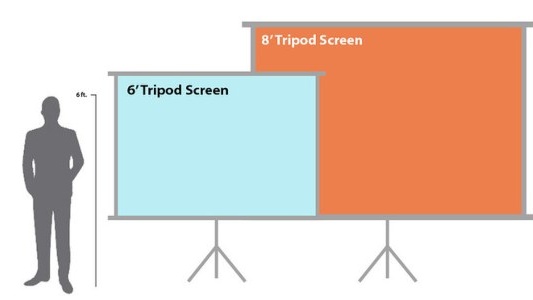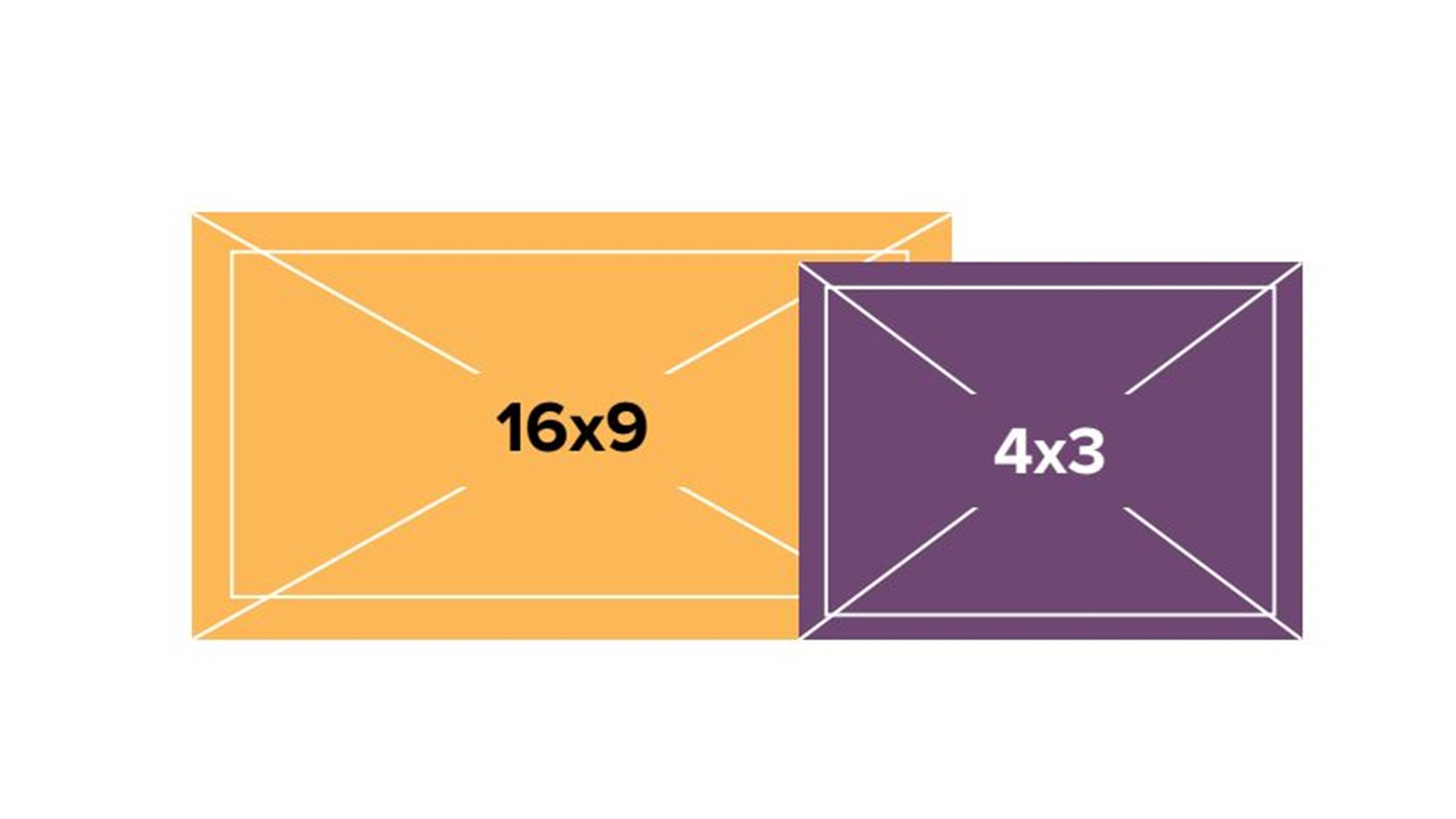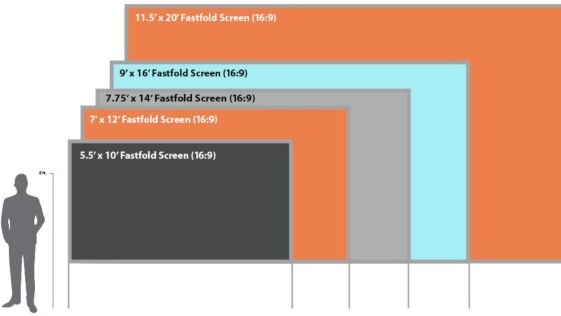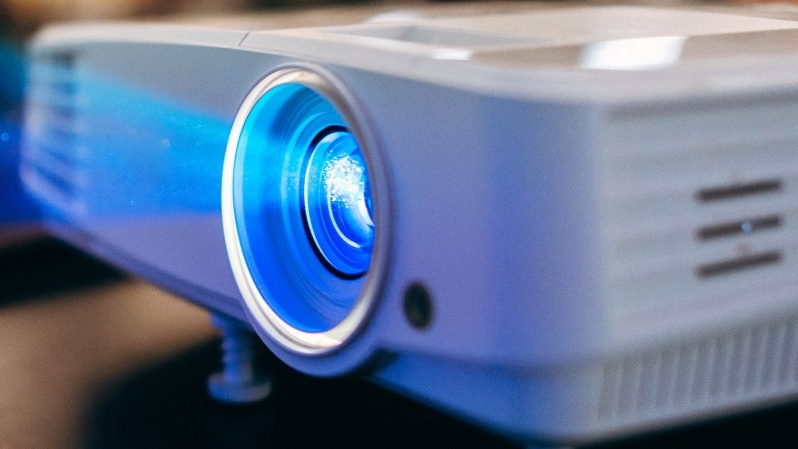How to choose the Right Projector Screen Size for Events
Choosing a Projector Screen for Events
Confused about what projection screen size to rent for your meeting, conference, or other events? You’re not alone. Projection screens come in a huge variety of sizes and shapes, and it can get confusing, fast.
But it’s critical to know how big your screen needs to be because there’s no single standard projector screen size. The last thing you want is a screen that can’t be seen by all your attendees, or worse — one that’s not compatible with space or projector.
Luckily, once you have your basic event details figured out, calculating your screen size comes down to a few simple factors. To figure out the right projector and screen size for your event, you’ll need to know these basics:
- How many people you’re expecting
- Your content’s aspect ratio (We’ll explain.)
- Your venue’s ceiling height
- How bright your projector needs to be
Here’s our helpful projector screen size guide to help get you started.
DETERMINE HOE MANU PEOPLE YOU’RE EXPECTING
First, confirm how many guests you’re expecting, and how many people can fit into your room. If your event is in a hotel, you can often see how many people will fit in different seating arrangements by looking on the hotel’s website.
For smaller meetings of up to 100 people, a tripod screen is a great option. Tripod screens come in 6′ and 8′ dimensions, can be either 16:9 and 4:3 aspect ratios, and are flexible in an event space. They also have adjustable legs so ceiling heights aren’t a concern, and they don’t require technician setup.
But if your audience is larger than 100 people, you’ll probably need a fastfold screen in the correct size. These screens require a professional to set-up, and you’ll usually need to confirm all the specific details with your AV provider before renting.
FIGURE OUT WHICH ASPECT RATIO YOUR CONTENT IS IN
The next thing you’ll need to know is if your content is in a 16:9 or 4:3 aspect ratio.
The aspect ratio basically means the shape of the screen, based on a ratio of width to height. For example, a 4:3 aspect ratio for a projection screen means that for every 4 feet of width, there will be 3 feet of height.
These days, almost all content created on a computer is going to be at 16:9. But if you’re really unsure and can’t find the answer from your speaker, go with a 16:9 screen because your AV team can more easily adjust 4:3 content to fit on a 16:9 screen than vice versa.
CONFIRM YOUR VENUE’S CEILING HEIGHT TO MAKE SURE YOU HAVE ENOUGH ROOM
You’re almost there. You’ve chosen your screen size, and now you just have to make sure your venue’s ceilings are tall enough to accommodate the whole set-up.
For 4:3 screens: Add three feet of height for the legs. That means a 7.5’ x 10’ screen will have final dimensions of 10.5′ x 10′.
For 16:9 screens: Add four feet of height for the legs. That means a 5.5′ x 10′ fast-fold screen will have final dimensions of 9.5′ x 10′.
This is a good rule of thumb to determine your standard screen height without any kind of dress kit or top valence. Adding a dress kit, which makes screens look a little more polished and professional, will add one more foot of height and four feet of width.
CONFIRM YOUR PROJECTOR AND SCREEN ARE COMPATIBLE?
If you already have a projector that you plan to use, it’s important to remember that not all projectors and screens work together. As screens increase in size, the lumens (aka the brightness) required in a projector increase as well.
Think of projectors like a flashlight: The light spreads out across the surface the further away from that you are. So, the bigger the screen and the farther away your projector is for the screen, the brighter the light needs to me. If your projector doesn’t produce enough lumens, you may have trouble seeing the content on the screen.
We’d love To Meet You In Person Or Via The Web!
Main Office: Suite M-01, 512, 3rd Street, Abu Dhabi, UAE
Phone: + 971 2 6767019
WhatsApp: + 971 55 3979668
Email: web@OfficePlusUAE.com





